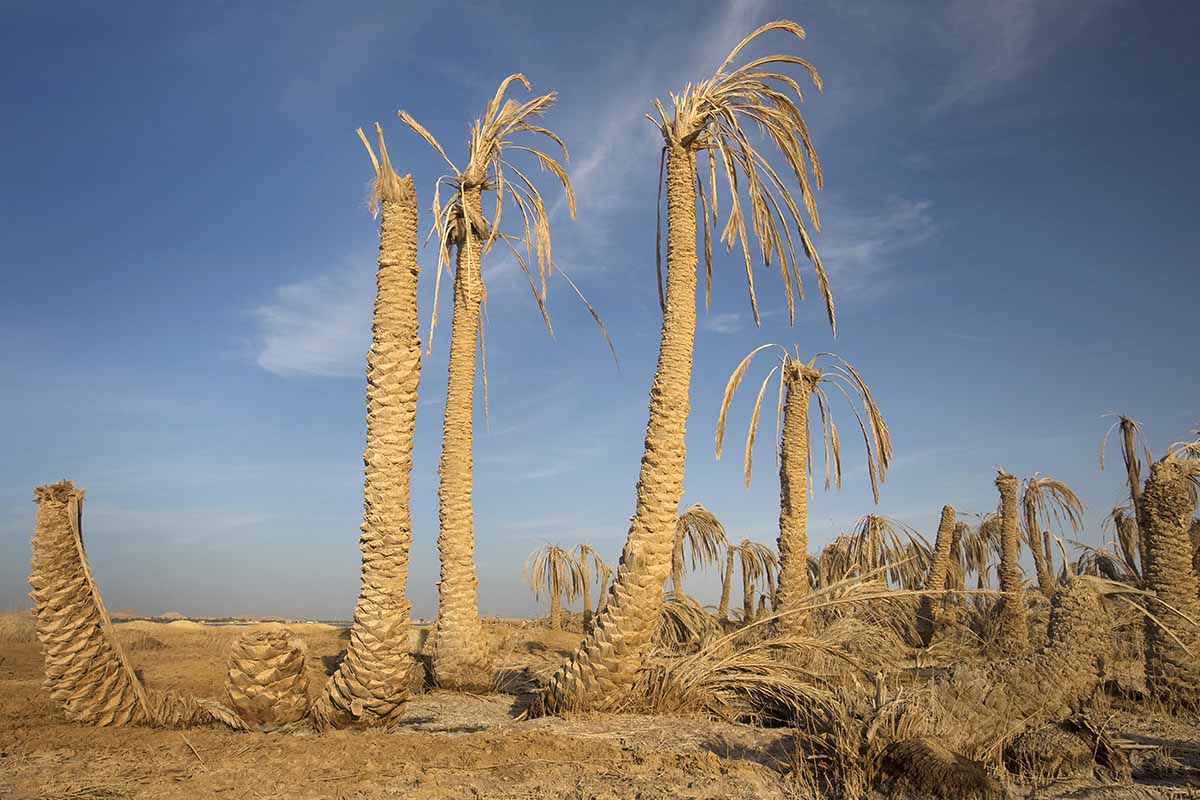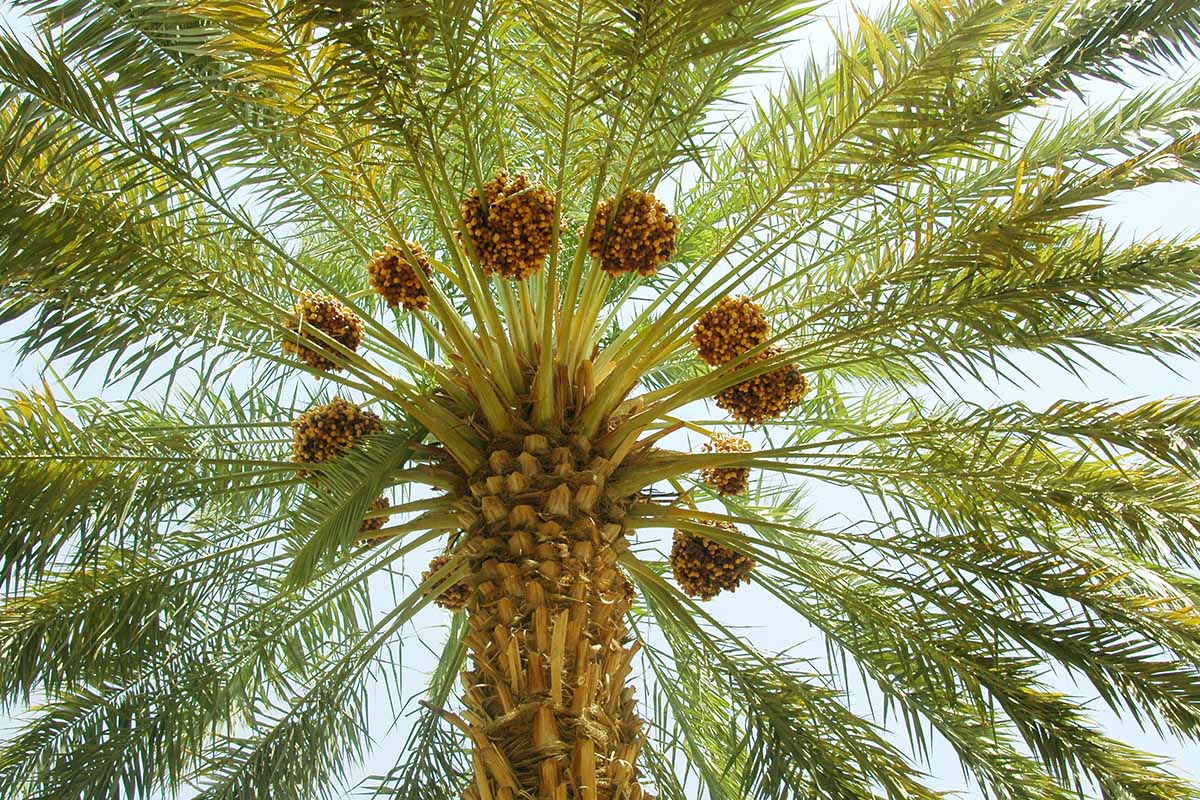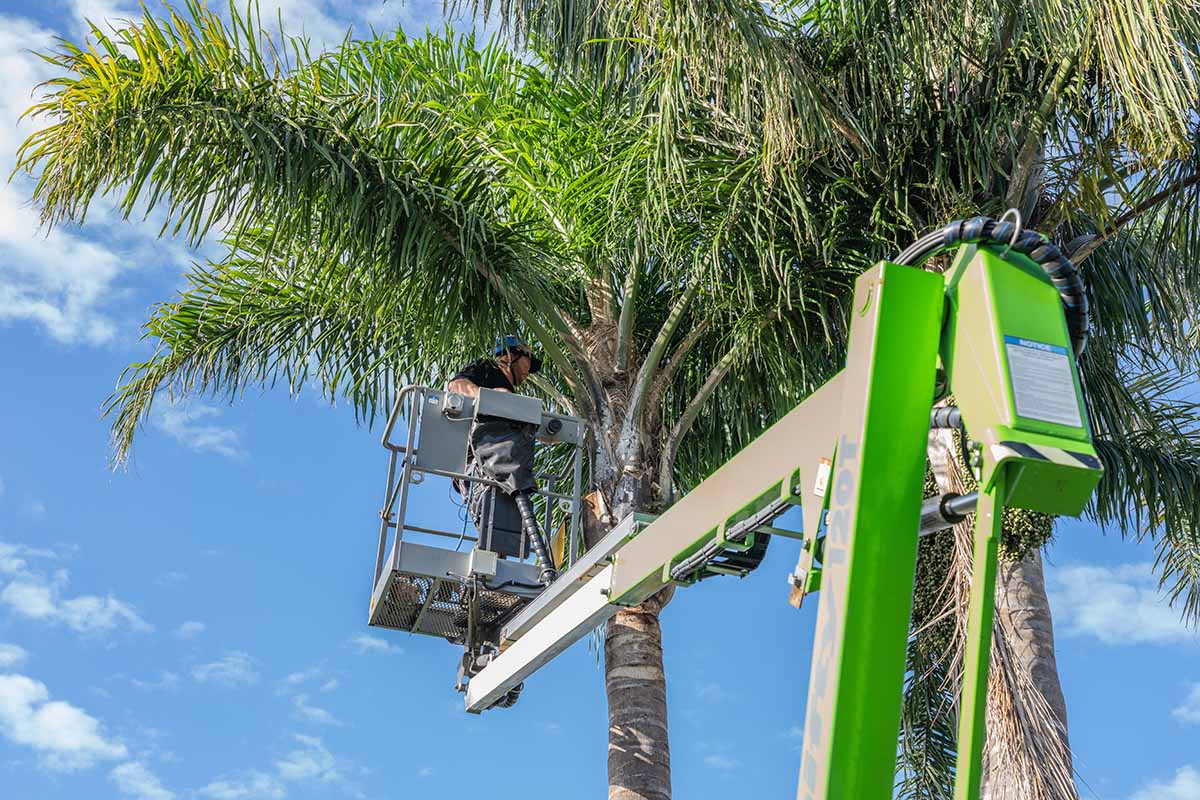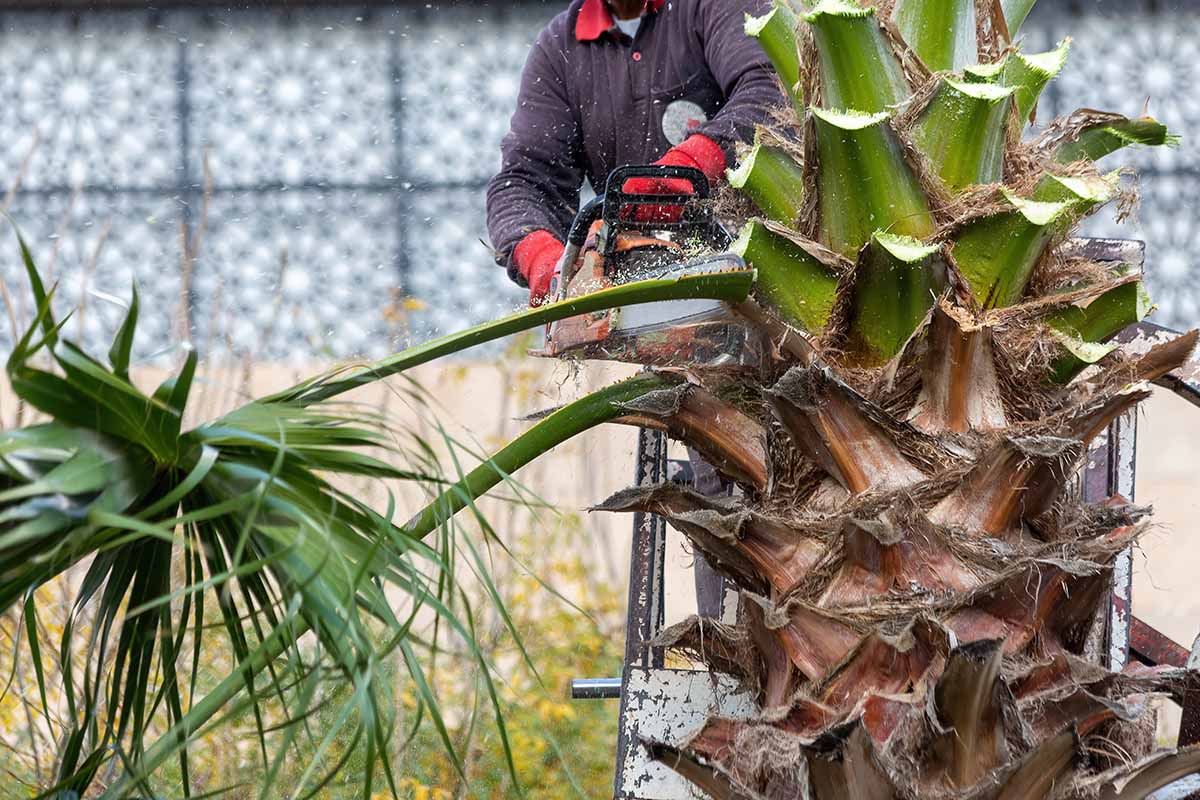Living in Southern California, you tend to get used to palm trees. They are everywhere, about as iconic as the Hollywood sign.
In fact, one of the most well-known photos of the Hollywood sign was taken on Windsor Boulevard between 4th and 5th Streets, showing a palm-lined street with the iconic sign in the center. It adorns postcards, posters, and t-shirts sold to tourists all over the city.
In this guide, we’ll discuss how you can save a palm tree without fronds by understanding signs of good health, how to maintain plant health, and learning when to recruit expert assistance.

We link to vendors to help you find relevant products. If you buy from one of our links, we may earn a commission.
We’ll also cover how to revive a dying specimen if necessary – so keep reading to learn more!
One thing you also see with so many of these plants in the area is how strong they are. It is not uncommon to walk down the street and see a specimen chopped down to its base, with a new sprout growing out of the stump.
When I was working as a landscaper, we planted hundreds of palms. And we also removed some. But most of the time, we would recommend that people not try to remove palms.
You basically have to dig down deep and remove the roots, then let the root system die out before replanting anything in its place to ensure the palm does not grow back.
I have even seen specimens that appeared dead come back to life with some fertilizer and TLC!
What You’ll Learn
Causes of Palm Frond Loss
You know that feeling when you drive by a palm tree and see it’s full of lush green fronds? It feels like all is right in the world.
Unfortunately, violent storms, cold snaps, and excessively wet winters can quickly take away this beautiful sight.

Leaf loss due to extreme weather can happen in a matter of days and leave your beloved plant looking bare.
Pests such as scale insects can also ravage the fronds quickly if not treated properly. Diseases like root rot often go unnoticed until they’ve taken their toll on the entire plant.
All of these things are sometimes out of our control, but there are still ways to help your plant stay healthy despite leaf loss.
Check for Signs of Health
If you notice a full crown of foliage, a balanced number of fronds creating a full, lush ring around the tree at the crown, and the ability to produce new fronds, then your palm is likely in good health.

But don’t be fooled by appearances. Even if those factors look promising, it’s important to understand the signs that can tell you whether or not your plant is thriving.
Look for other indicators such as freshness in color, texture, and the structure of the fronds. If these seem healthy, chances are that your palm is doing well.
Frond loss can occur naturally, but if this happens more frequently than normal, then it could be an indication something else is going on with your plant.

Signs of a problem include yellowing or browning leaves and stunted growth, which could mean there’s an issue with either the soil quality, disease, or watering frequency.
How to Save a Palm Without Fronds
Saving a palm without fronds can be challenging because the foliage is essential for the tree’s health and growth.

However, if your specimen has lost its fronds due to disease, storm damage, or other factors, you can still take some steps to improve its chances of survival.
Here’s what you can do:
- Assess the damage – Examine the tree carefully to determine the extent of the damage. If there are any remaining fronds, inspect them for signs of disease or pest infestation.
- Prune carefully – Remove any dead, damaged, or diseased fronds using sharp, sterile pruning tools. Make clean cuts close to the trunk without damaging the bud or collar area. Removing dead fronds will prevent potential disease spread and reduce the tree’s stress.
- Provide proper care – Focus on supporting the plant’s health to aid its recovery.
- Provide support – If the specimen has lost most of its fronds, it may need physical support to prevent it from falling or leaning. Install a temporary brace or tie the tree to a sturdy support, such as a stake or neighboring tree, until it regains stability.
- Be patient – Saving a tree without fronds will require time and patience. Growth may be slow, but with proper care, the tree can recover and eventually produce new fronds. Monitor its progress and continue providing the necessary care and maintenance.
It’s important to note that not all palm trees can survive after losing their fronds, especially if the growing point or bud is damaged.
In such cases, it may be difficult to save the tree, and you may need to consider replacing it. However, until the roots are dead, there is still hope.
Consulting a professional arborist can provide you with specific guidance based on the species that you’re growing and the severity of the damage.
When to Call in Expert Assistance
If you feel saving your palm is going to be too difficult to manage alone, don’t wait until it’s too late to get help – seek professional assistance now to ensure its future health and longevity.

If you notice that your palm tree is losing fronds or that the core of the plant is mushy or heavily damaged, don’t hesitate to contact a professional. They’ll be able to assess the situation and suggest ways to restore your beloved tree back to health.
If you try to fix an overly complicated issue yourself, without proper advice from an expert, there’s a good chance that you might make matters worse.
An experienced arborist can provide invaluable insight into restoring health and safety of these trees in both residential and commercial settings.
It is essential that you make sure your plants are properly taken care of if you want them to be around for years to come. So don’t risk waiting until it’s too late, reach out for assistance sooner rather than later.
Reviving a Dying Tree
Dying palm trees can often be brought back to life. While they are some of the most resilient trees out there, and some can grow back almost like magic, it is best to not take your chances.
To give your tree the best chance of coming back from the brink, you must start with soil that’s rich in nutrients.
Top-notch soil paired with an appropriate fertilizer blend will give your tired specimen the boost it needs.

If your palm is growing in a container, Miracle-Gro Cactus, Palm, and Citrus potting soil from Amazon helps to prevent overwatering or underwatering to help keep your plant safe.
With an already established landscape specimen, it will be hard to adjust the soil, but providing it with a slow release product such as Dr. Earth fertilizer during the growing season can give it a boost of nutrients.
This Dr. Earth product has an NPK ratio of 5-4-6 and contains beneficial soil microbes and mycorrhizae to improve the structure and health of your soil.

You can find this product available via Amazon.
Next, water more often in summer months than in winter to prevent overwatering or underwatering that can damage roots.
Finally, use good pruning techniques by cutting fronds only after they’re fully dead. This will allow for the healthy growth of new foliage and help to maintain a balanced number throughout its lifetime.
Maintaining Health
Keeping your trees healthy requires consistent care and attention. Fertilize in springtime, water wisely, and prune judiciously. Our guide to growing palms provides full cultivation instructions.

Fertilize healthy specimens with a good quality product such as the Dr. Earth product mentioned above.
When watering, make sure you do so deeply but infrequently. Overwatering can be as detrimental to your plants as underwatering.
The exact amount you should water your palm depends on the species and growing conditions, so be sure to check watering guides for your specific specimen.
Lastly, when it comes time to prune, be sure to only remove dead or dying fronds so that the tree retains its full crown of foliage as this is essential for a healthy specimen.
You should also consider leaving an old skirt of dead fronds around the base of your trees if you live in an area prone to hurricanes or monsoons. This “skirt” provides protection from strong winds and rain that would otherwise cause damage.
Best of Luck With Your Palm CPR!
You know the importance of maintaining your palm tree’s health to ensure it doesn’t lose its fronds. Unfortunately, if it’s too late for you to prevent that from happening, you can still take steps to save it.

With proper care and guidance from an expert, there’s a good chance your plant will make a full recovery. Don’t give up hope just yet!
If you have had success saving your palm from the brink, please tell us about it in the comments section below!
And for more information about growing landscape trees, check out these guides next:
Eric, I live in east central Florida in Satellite Beach. I read your article on “What to do if your palm tree is dropping fronds”. I have a Royal Palm tree that is 7-years old. The trunk is large. I have one palm branch left. The other have fell either from wind or browned. The center spear is brown and withered. I have been waiting for the new center spear branch to show it’s face for the last 4-months but nothing. It’s being watered and fed. I really don’t want to give up on this tree. It’s 1 of 12… Read more »